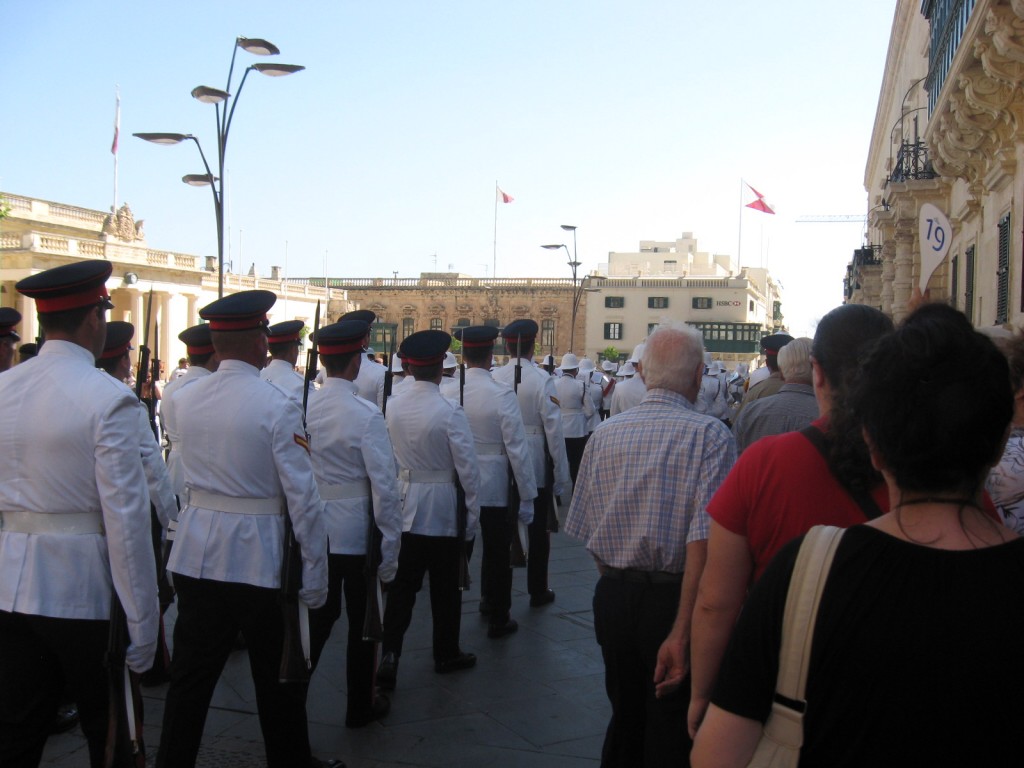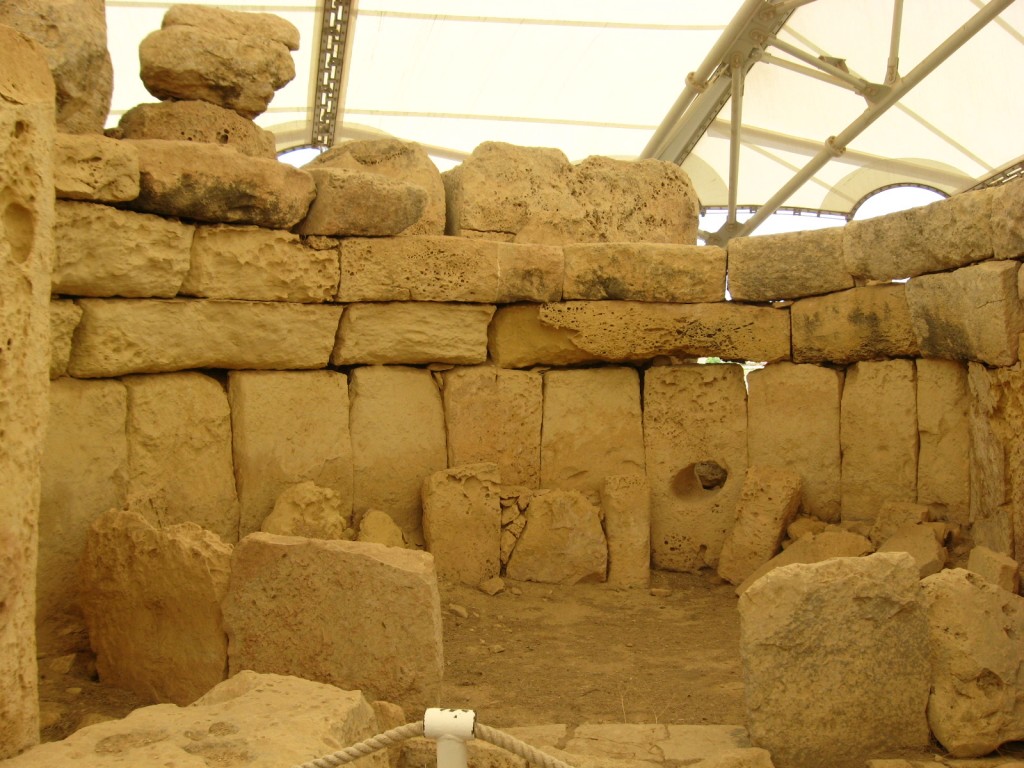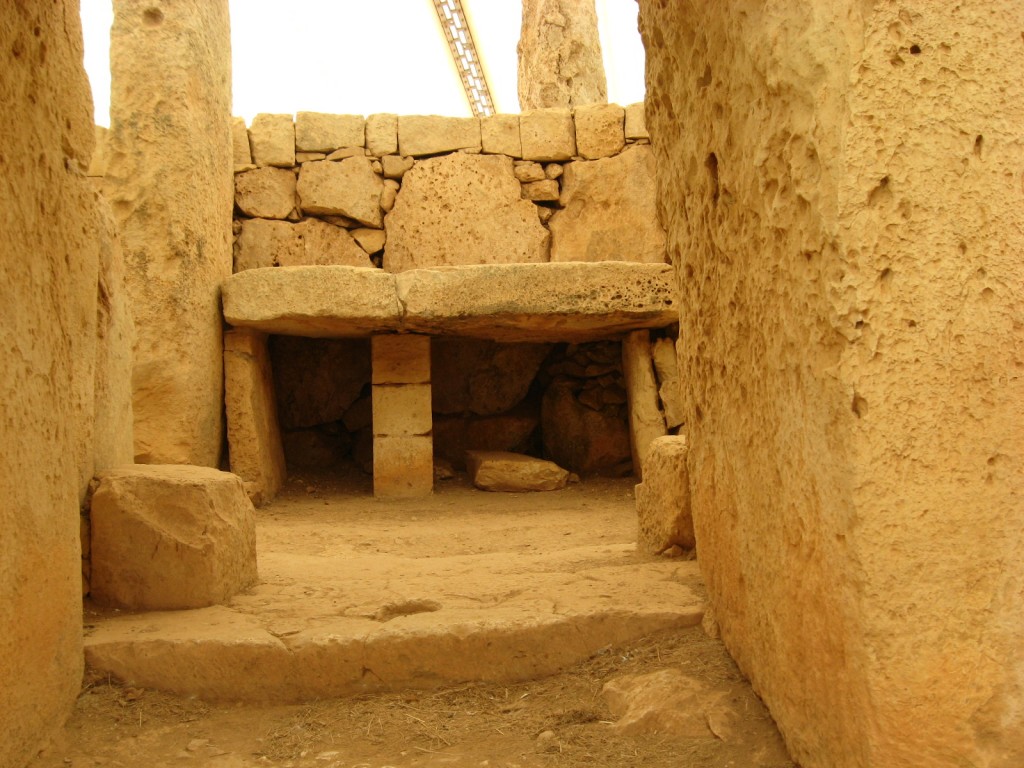Today’s plan included getting an early start, visiting the Grandmaster’s Palace and Armory in Valletta, then riding a bus to the east side of the island to see the 5,000-year-old Neolithic temples of Hagar Qim and Mnajdra. Of course, I’m in Malta and I’m on vacation. Early has quickly become a relative term. This relativity gave the day an unexpected and somewhat fortunate start when I got to see the Changing of the Guard that the Maltese Army performs every two weeks.
Like all of these ceremonies it’s full of ritual, pomp, and circumstance. At the same time, it delayed visiting the Palace and Armory. I was determined to complete the visit this time because I’d made two aborted attempts earlier in the week – most recently yesterday when the Armory was open but the Palace wasn’t. Frankly, once I got inside, I didn’t find it worth the wait or the anticipation. At least I saw it.
Yesterday’s experience was a mere prelude. Friday I had a true Maltese bus adventure. The bus was 20 minutes late so it was again packed with people who’d normally be split onto two buses. While yesterday’s crowds were fairly subdued, this collection of people included two women arguing quite loudly in Maltese over where the younger of them should position her stroller. Once that apparently major dispute was settled, we pulled away. The chatter on the bus was loud and incessant and l felt like I was in the middle of a market listening to people haggle over prices. The Maltese don’t bury themselves in reading or I-pods. This was a fun ride.
The temples at Hagar Qim (AHjar–eem) and Mnajdra (imNIGHdra) were much more impressive than those at Tarxien and well worth the ride. The only minor letdown was the tent’s covering the ruins. They’re necessary to limit wind and solar erosion on their soft limestone composition, but they diminish the impression they’d make without the covering. The protection is particularly crucial at Hagar Qim where even the outer walls are soft globigerina limestone. In the Mnajdra complex, the outer walls are harder coralline limestone and only the inner walls are globigerina. These complexes, like the one at Ggantija on Gozo, predate Stonehenge by about 1,600 years. (The oldest was built between 3600 BCE and 3200 BCE.) It’s simply astonishing to walk through structures of such antiquity constructed with no advanced technology or tools and no system of writing.
It should go without saying (but I’m going to say it regardless) that determining the purpose of the temples is speculative since the people who built them left no record. Starting with Hagar Qim (which means “Stones at Prayer”) The main temple (there are remains of three temples in total) has six large circular rooms most of which can be entered from the outside with all of them connected by an interior passage. Statues of deities and sacrificial animal remains have been excavated from the temple but no human remains have been found nearby. Thus, the temple seems to have been used for animal sacrifices, oracle rituals, and making other types of burnt offerings.
A half kilometer down the hill and closer to the sea stands the Mnajdra Temple Complex that consists of three conjoined but not connected temples. The lowest temple was most likely used for annual time keeping or astronomical observations. On the equinoxes sunlight passes through the main doorway and illuminates the central axis of the temple while on the solstices, the sunlight falls on the megaliths to either side of this entrance. As with the complex at Hagar Qim, archaeologists have inferred that the Mnajdra temple was also a ritual site but not a burial site.
The architecture of these temples also tied together with the structures carved in the cave at the Hypogeum a way that left me a bit awestruck. (I suggest you look closely at all three.) It’s about a 500m downhill walk from Hajar Qim to Mnajdra. Exiting the complex and climbing the hill will leave me a bit breathless (and not simply as a result of the view).
Off the coast in the distance, you can see Filfla Islet. This small, uninhabited speck is the southernmost point of the Maltese archipelago. Once used for target practice by the British armed forces, the island is now a bird sanctuary to three species of sea birds that breed there. Pictures from the day are here.
After several hours wandering these sites, I decided I’d done enough for the day and chose not to visit the Ghar Lapsi or the Blue Grotto, both of which are quite close so I exited the complex planning to catch the bus back to Valletta. I knew from looking at the schedule that buses to this part of the island run considerably less frequently than in the more densely populated areas near Valletta and Floriana. I was the first to arrive but wasn’t alone for long before being joined by a group of young folks from the UK.
As we waited and waited and waited with the bus being ten, then fifteen, then twenty minutes late, more people came from the temple complex. The group now congregated in and around the crude concrete shelter grudgingly celebrating Malta’s humidity festival in something of a mini-U.N. There are the four youngsters from the UK, three or four Spanish speakers, five French speakers (two of whom just broke into a song about snow because it’s HOT, me, who understands a bit of the French and a touch of the Spanish but not enough of either to fully chat, and three Japanese men who are sitting stoically probably not comprehending how a bus can be so late. The time seems to drag on interminably. Some of us sit. Some stand. All of us sweat. And wait. Now we’ve added a family of Italians to our group pushing the population of the bus shelter above twenty.
At long last, I spot a bus but, sadly, it’s neither the one on the schedule nor the one we are awaiting. It’s only going to the airport and not to Valletta. No one cares. The call of an air-conditioned vehicle is too strong. To a person, everyone piles on. Some get off at the Blue Grotto while the rest of us ride to the airport and then scramble to find the first available bus to Valletta. This trip was an old-fashioned bus ride of Maltese legend.
Despite all this, I will reiterate that the easiest way to get around Malta – especially for a right-hand driving Yank – is using the bus. The island is so small that public buses take you to or very close to anywhere you might want to go and generally do so in a reasonable amount of time. Once you commit to traveling by bus, the most efficient way to get around is to buy a full day or multi-day pass. I bought a 7-day pass that allows unlimited rides for 12 euros (about $15 at the time of my visit). Typically, you simply show the driver your pass when you board and take a seat.
At the airport, the driver took a smoke break but left the bus open and she didn’t ask for our tickets when she got on. More than halfway to Valletta we stopped at a park and ride where a conductor or supervisor got on the bus and then checked our tickets. My first thought was that some people had gotten a free ride. My second thought was, “Well, it’s Malta.”
When I got back to Valletta, I made my usual excursion to the rooftop terrace bearing a book and a can of Cisk. Sitting there I have the blue sky. I have the blue waters of the Mediterranean. I have a view of part of the Grand Harbor. I have a lovely cooling breeze. I have an interesting book to read and a beer I like to drink. I do not have any worries, stresses or cares.
When I began to feel a hint of hunger, I left the flat and went for a bit of a walk to further stimulate my appetite. Today was a busy day for the cruise ships that daily disgorge hordes of tourists. I watched one depart.
When I felt hungry enough, I randomly picked a café around the corner from the flat and had a perfectly fine dinner. (The population of Valletta is about 6,000 and it seems like there’s one church and two cafes for every resident.) After dinner, I knocked on Patrick’s door and somehow ended up spending another evening talking with him and Diane. We talked about my impressions of Malta, our neighbor John, Maltese politics, and a bit of geography. Comparing the relative sizes of Malta and the U.S. seemed difficult for Patrick to grasp. The thought that I had to travel over 60 kilometers or more than three Maltas laid end to end just to visit my father left him shaking his head. It’s an interesting world.




I experienced a similar perspective on distances when I lived in Western Europe. Many of the countries were within short driving distances: France, Belgium, Netherlands, Luxembourgh, Germany….(or short train rides) but people didn’t travel as much between countries except on annual holidays. Being from the US Mid-west, it was nothing to drive an hour (or 3 ) to go to an event or restaurant.
The differences in distance perceived as “reasonable” is so varied as to make a strong cultural difference, I think.